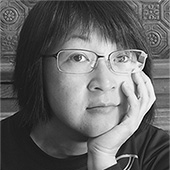Our Lens
Businesses in Asia are continually becoming more aware of and interested in user experience and how it can help them to succeed in the marketplace. The success and allure of Apple helps, but understandably, many businesses in Asia still don’t know what user experience is or how to employ design thinking and UX methods in improving the design of products and services. They need a helping hand.
However, the lens through which we look at the first meeting with a client is all important. When meeting a first-time client who is interested in what we do, we have an opportunity to explain and offer our unique skill sets. This first meeting can be a mix of exciting and daunting. We need to assess the maturity and receptiveness of the person or team we are meeting to best determine how to help them. This requires planning what questions to ask to discover what we need to know to take the right approach to devising a UX Plan that best fits their current situation.
While the easiest approach might seem to be to go to a first meeting with a client armed with a list of your services and methods in a slide deck, selling a standard approach that may be right for you, but might not fit the precise needs of the client is not recommended.
It is important to have a clear focus, and the primary purpose of the first meeting is to get alignment with your client on a joint approach to a project. You need to be able to assess whether there is sufficient flexibility to achieve a joint understanding, with the long-term goal of creating a culture of design thinking in the business going forward.
“Having a shared language is part of the rhythm a team discovers in moving collectively toward achieving a shared understanding and, finally, shared values. Great products come from shared values.”—from “Getting to Value” on UXmatters
Letting Go of Everything You Know
Before walking into the first meeting with a client, it is important to let go of everything you think you know and approach the session with a fresh perspective. As you begin to learn about a new client’s business, you’ll also assess whether the people you are meeting with think about customers and empathize with them when designing products and services as you do. For example, do they just want to improve a design with the goal of profit for profit’s sake, or is it about something else? This is something you may need to explore together.
You can do some preliminary homework and learn about the business by speaking to people who have worked in the business or in the same business domain, by visiting their Web site to get an initial impression of their approach to customer service, by calling customer service to ask about a product or service, or by visiting a shop to get an overarching impression of a product. In doing this, you are first immersing yourself in their world and gaining an understanding of their language.
If you have been invited to meet with the business by a person you know, it can help to talk to them before the meeting to learn about the business climate, team setup, and the people you will be meeting with on your first visit.
It’s good to keep your UX methods close at hand, but don’t lead with them as you embark on learning about the business and explore how you can help.
We Are All New at This
Even though your client may have invited you in as the UX specialist, there is something good in your starting from a position of newness. This shows everyone participating in the first meeting that you are there primarily to serve as a facilitator to help the team achieve a holistic understanding of their project needs. This also lets you avoid bringing any arrogance or a new layer of confusion to the table. Your common goal is to see how you can help the client achieve product success.
One way of thinking about this is to imagine that you are newly employed as full-time staff by the business, and this is your first week at work:
- What would you want to know about your new workplace and the people you’re working with?
- What would you want to learn about the way the business is making products and services?
- What collective goal would help the team to remove the divisions that often exist between departments and people delivering products and services?

